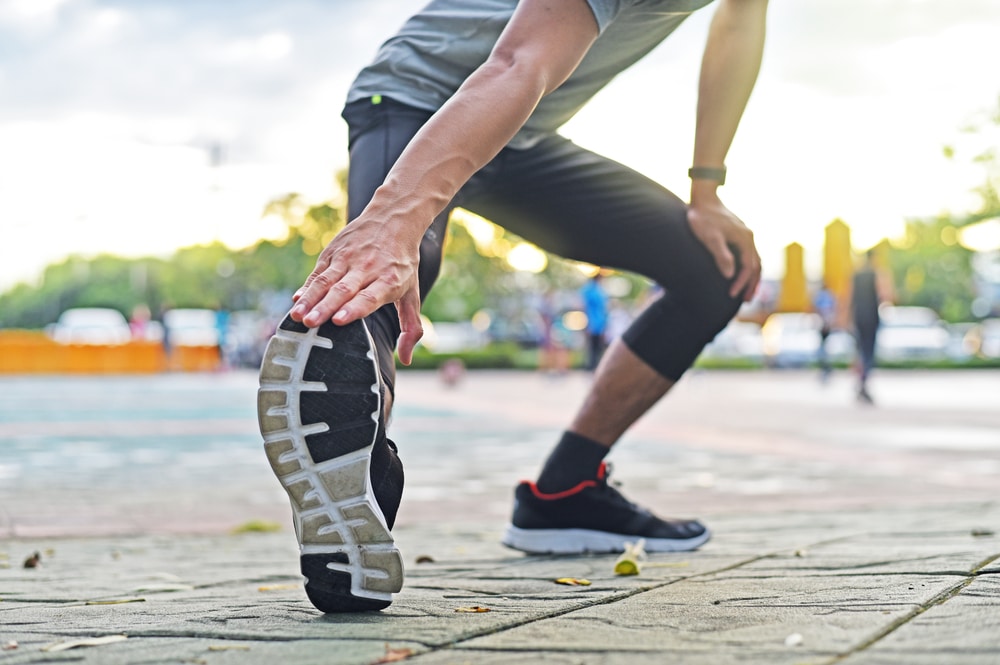There are a few common traits that all athletes share, both professional and otherwise, and a desire to avoid injury tends to be top among them. Athletes and those who exercise regularly have a number of resources to help avoid and treat any injuries that may arise, and the field of sports medicine and orthopedic surgery is a great example.
At The Orthopaedic Center, we’re happy to offer a wide range of orthopedic services to patients around Tulsa, including comprehensive sports medicine solutions that help with everything from injury prevention to many other needs. Here are some general tips from our sports medicine professionals on how to avoid injuries during any kind of activity, from simple areas you may already be aware of to some you may not have considered.

Value of Hydration
One of the broadest and most important areas for injury prevention has to do with hydration. Athletes need to remain well hydrated before, during, and after activities in order to perform at their best and help prevent injuries.
Dehydration can lead to cramping, strain on the muscles and joints, increased risk of falls or slips, and much more. Make sure you’re taking adequate breaks throughout your activities to hydrate, and be aware of how important it is for you.
It’s also important to be aware, however, that hydration isn’t just vital directly before a given activity or event. It’s important to stay hydrated and avoid dehydration throughout the day to help your body perform at its best when you need it most.
Warm-Up and Stretching
Another key area of injury prevention involves ensuring you’re adequately warmed up before engaging in activities. This means stretching prior to beginning, as well as taking time to warm up the muscles and increase your heart rate slowly. Warming up helps ensure that all of your joints and muscles are loosened up and ready for activity, so that they can help support the body properly during whatever activity you may be engaging in.
While doing this, you should be thinking about both dynamic and static stretches that can help prepare the muscles and joints for activity. Dynamic stretches refer to stretches that require movement, while static stretches involve stretching a body part in one place and holding it.
Cool-Down
On the other side of this coin, it’s also important to cool down the body after activity, as this helps reduce soreness and risk of injury. Cooling down involves gradually decreasing your heart rate with light movement or stretching and light jogging, which in turn will help you recover faster and avoid unnecessary strain on the body.
It is also important when cooling down to stretch again. This will help reduce the amount of lactic acid that may have built up during the activity, which can be another source of soreness.
Listen to the Body
Throughout any activity, it’s also important to pay attention to your body and its signals. If you feel pain at any point, take the time to rest or adjust what you are doing in order to avoid further injury. Your body is trying to tell you something when it experiences pain, so make sure you listen and give yourself the break you need if necessary.
This will help you feel better in the short term, and help prevent further problems in the long term.
The Right Equipment
If your sport or activity format requires it, make sure you have the right equipment that fits properly and is in good condition. This equipment will help provide support to the body and reduce risk of injury. Wearing the correct shoes for your activity, for instance, can help your overall performance as well as reducing chances of slipping or straining something during play.
In other cases, equipment needs might be far more significant. If you’re engaging in contact sports, for instance, you’ll need the right kind of padding and protective gear to help keep yourself safe.
Work With Sports Medicine Professionals
For many athletes, working with sports medicine professionals can be a great way to learn about and implement injury prevention best practices. They’ll be able to provide insight into your particular sport or activity, as well as give advice on what you can do to help reduce your risk of injury.
This could include anything from developing warm-up and cool-down routines to figuring out the right kind of equipment for your body. A good sports medicine team can help you identify potential problems before they arise, so that you’re prepared and ready to go for whichever activities you plan on engaging in.
The Orthopaedic Center is proud to offer a wide range of orthopedic services to aid Tulsa athletes at every level. From comprehensive sports medicine solutions to unmatched expertise in treating injuries, we’re here to help you get back to doing what you love. Contact us today for more information!